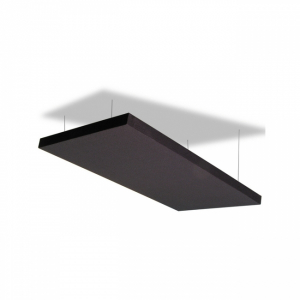Categories
Browse by:
Primacoustic Complete Acoustic Solutions
| Primacoustic is a manufacturer of acoustic materials of all types. |
|
| Code: | Primacoustic |
| Brand: | Primeacoustic |
| Recommended: | Houses of Worship, Clubs |
| Industry: | Mining |
| Government: | TAFE, Universities, Local Government, Schools |
Primacoustic Delivers Complete Acoustic Solutions
Primacoustic is a manufacturer of acoustic materials of all types. With over 30 years experience in studio and live sound, and 15 years in acoustics, we have amassed a tremendous resource in the form of knowledge that is interspersed throughout this web site. We firmly believe that by sharing knowledge, not only will you enjoy better results from our products; you will pass along your learning to others.
Direct sound waves reach the listening position first by virtue of the shortest path. The sound a person experiences is always a mixture of direct and reflected sound. The ratio between the two is dependant on the listeners distance to the loudspeaker. Early reflections are the first reflections from room boundaries to arrive at the listening position. Our animated room graphic below shows what typically happens in small rooms. The first and loudest early reflections (in red) come from the side walls because that is the shortest reflected path between the loudspeaker and the listener. On the response chart the first loud spike represent these early reflections. Many more early reflections follow in decreasing amplitude reflected from transverse angles other room surfaces further away.
Secondary reflections arrive behind the early reflections. The second large spike on the chart represents secondary reflections from the rear and side walls. The brain uses information provided by secondary reflections to gauge the size of a space. The longer thedelay between the impulse wave and secondary reflections the larger the room.
The brain knows that, having traveled further, secondary reflections are naturally weakerThis poses an acoustic problem for studios and home theaters. The close proximity of the rear wall can set up a situation where the secondary reflections arrive with as much or more energy than the early reflections. The brain tries to deal with the unnatural acoustic but eventual ear fatigue results.
Diffuse field reflections are a complex propagation of the acoustic energy between many room surfaces. The time interval between reflections is overlapping and the ear hears the multitude of reflection as a single wash of room reverb. This is shown on the chart as a dense field of low amplitude spikes. They are much weaker now, having bounced oftwo or more surfaces, and eventually fade away altogether.
These diffuse reflections also carry information about the acoustic space to the brain. There is a natural attenuation of very high frequencies in the diffuse field time region because of the directional characteristic of high frequencies and their nature to be absorbed by soft materials. Since diffuse reflections have bounced off of more surfaces there is more opportunity for high frequencies to be absorbed.

